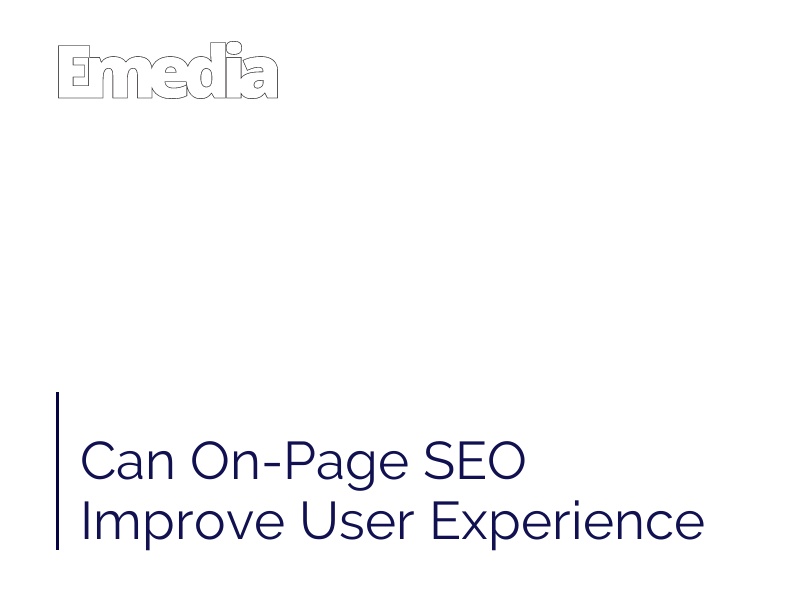Do you want to improve your website's user experience?
Can on-page SEO help you achieve that?
Find out in this article how on-page optimization techniques can enhance user engagement and satisfaction.
Discover how user-friendly design and strategic SEO strategies can improve website usability and ultimately create a more satisfying browsing experience for your audience.
Don't miss out on the opportunity to improve user experience and drive more traffic to your site with on-page SEO.
The Impact of On-Page SEO on User Engagement
Improve your website's on-page SEO to increase user engagement.
By measuring the effectiveness of on-page SEO on user retention, you can optimize your website to keep users engaged and coming back for more.
On-page SEO techniques such as optimizing meta tags, creating quality content, and improving site speed can have a significant impact on user engagement.
When users find what they're looking for quickly and easily, they're more likely to stay on your website and explore further.
Furthermore, exploring the relationship between on-page SEO and bounce rates can help you identify areas for improvement.
Enhancing User Experience Through On-Page Optimization
Boost your user experience by implementing on-page optimization techniques. On-page optimization not only helps improve your website's search engine rankings, but it also enhances the overall user experience. By focusing on conversion rate optimization and mobile optimization, you can create a seamless and enjoyable experience for your visitors.
Conversion Rate Optimization: Leveraging On-Page SEO Tactics
On-page optimization plays a crucial role in increasing your website's conversion rates. By using relevant keywords in your content, meta tags, and headings, you can attract the right audience and encourage them to take action. Additionally, optimizing your website's loading speed and improving its usability can further boost your conversion rates.
Mobile Optimization: Enhancing User Experience Through On-Page SEO for Mobile Users
With the increasing use of mobile devices, it's essential to optimize your website for mobile users. By implementing responsive design, optimizing images, and ensuring fast loading times, you can provide a seamless experience for mobile users. This not only improves user experience but also helps your website rank higher in mobile search results.
| On-Page Optimization Benefits | |
|---|---|
| Higher search engine rankings | Improved user experience |
| Increased website traffic | Better conversion rates |
| Enhanced mobile user experience | Boosted brand reputation |
User-Friendly Design: A Key Aspect of On-Page SEO
Create a website that prioritizes user-friendly design to enhance your on-page SEO.
User-friendly design is a key aspect of on-page SEO as it directly impacts the user experience. When visitors come to your website, they expect it to be responsive and optimized for mobile devices.
A responsive design ensures that your website adapts to different screen sizes, making it easy for users to navigate and consume your content on any device. Mobile optimization is crucial in today's mobile-first world, where more and more people are accessing the internet from their smartphones.
By ensuring that your website is mobile-friendly, you not only improve the user experience but also increase your chances of ranking higher in search engine results.
Improving Website Usability With On-Page SEO Strategies
Ensure your website's usability is enhanced with effective on-page SEO strategies. By implementing these strategies, you can't only improve your website's search engine rankings but also provide a better user experience for your visitors.
Here are four on-page SEO strategies that can help improve your website's usability:
- Increasing conversion rates: By optimizing your website's content and design, you can make it easier for visitors to take the desired action, such as making a purchase or filling out a contact form.
- Streamlining navigation: A well-organized and intuitive navigation structure can make it easier for visitors to find the information they're looking for, reducing frustration and improving their overall experience.
- Optimizing page load speed: Slow-loading pages can lead to higher bounce rates and lower user satisfaction. By optimizing your website's performance, you can ensure that visitors can access your content quickly and easily.
- Implementing responsive design: With the increasing use of mobile devices, it's crucial to have a website that's optimized for different screen sizes. Responsive design ensures that your website looks and functions well on all devices, providing a seamless user experience.
How On-Page SEO Can Influence User Satisfaction
Improve user satisfaction by implementing on-page SEO strategies that enhance the overall browsing experience. On-page SEO not only improves your search engine rankings but also plays a crucial role in increasing user satisfaction. By optimizing your website for conversion rate optimization and mobile optimization, you can ensure a seamless user experience that keeps your audience engaged and satisfied.
Conversion rate optimization involves leveraging on-page SEO techniques to drive more conversions and achieve your business goals. By optimizing your content, layout, and call-to-action buttons, you can create a user-friendly experience that encourages visitors to take action.
Mobile optimization is another important aspect of on-page SEO that enhances user experience. With more people browsing the internet on their mobile devices, it's crucial to ensure your website is responsive and mobile-friendly. By optimizing your site's design, speed, and usability for mobile users, you can provide a seamless experience that keeps users satisfied and engaged.
To summarize, on-page SEO plays a significant role in influencing user satisfaction by optimizing for conversion rate optimization and mobile optimization. By implementing these strategies, you can enhance the overall browsing experience and keep your audience happy.
| Conversion Rate Optimization | Mobile Optimization | |
|---|---|---|
| Definition | Leveraging on-page SEO techniques to drive more conversions and achieve business goals. | Enhancing the user experience by optimizing your website for mobile users. |
| Importance | Increases conversion rates and helps achieve business objectives. | Ensures a seamless browsing experience for mobile users. |
| Techniques | Optimizing content, layout, and call-to-action buttons. | Designing responsive and mobile-friendly websites. |
| Benefits | Higher conversion rates and increased revenue. | Improved user satisfaction and engagement. |
